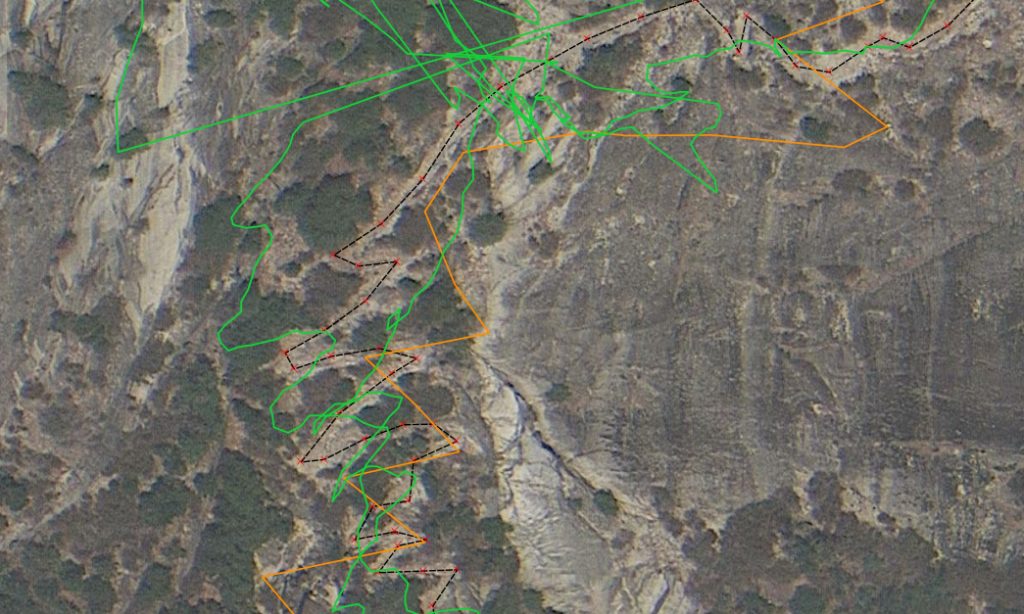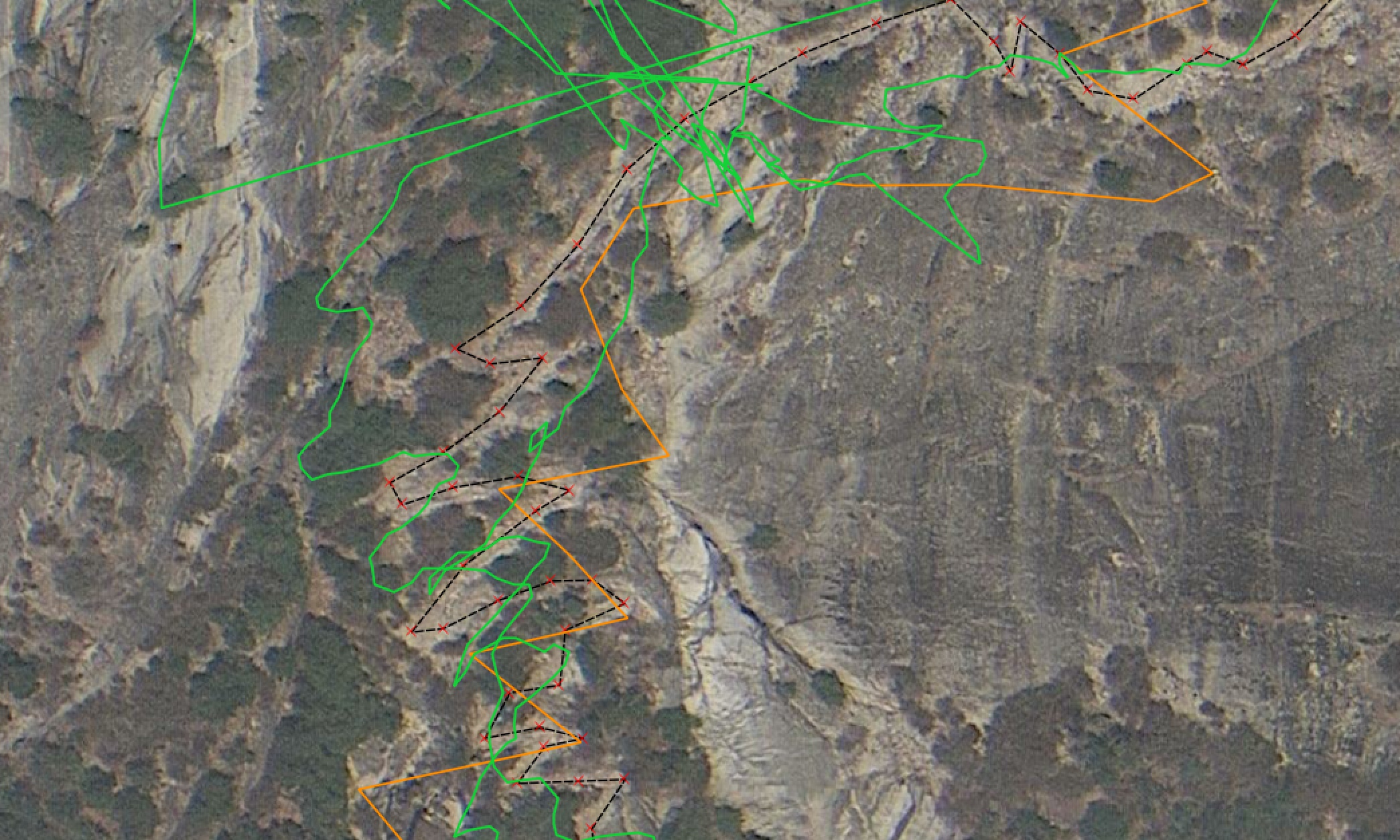Ever get done hiking and realize that the trail sign, your map, guidebook, and your GPS are all telling you different distances? Well you’re not alone. There are a few things at play here.
As I’m working on my new Yosemite map, I found myself staring at the screenshot below and thought it illustrated perfectly some of the issues with calculating distances. This is the Snow Creek Trail that switchbacks up out of Tenaya Canyon in Yosemite. This section in particular has a huge granite cliff on the left side of the image creating chaos.

The green lines are my GPS lines going up and coming down. The orange line is the data that I got from the park service. The background is imagery from Google. Lastly, the black dashed line is my attempt to make things as accurate as I can.
The first problem with your GPS is that it has a fairly small antenna. When you get into trees or into canyons, it obscures the view of the satellites and messes up the math. Your lines can go from being a little off to looking like the drawing of your 3-year old nephew. If you’re walking on a fairly flat, open area, the distances can be more accurate for sure, but if you think about a steeper aspect that you’re traversing across, errors to the left and right can add up quickly. (As an aside, a non-GPS distance counter like a FitBit will give you crazy wrong distances if based upon stride length alone. Walking on a sidewalk is completely different than hiking and a 13 mile hike can show up at a 22 mile hike.)
So what about park signs and this crazy orange line? Well that’s also a mixed bag. Some trails have been measured using a wheel which is probably the most accurate. As you can see from this image, the GPS data for this trail is particularly problematic. Different park units have had different efforts done to map their trails. Glacier’s are particularly good overall as they’ve done a lot of mapping with professional units and matching up with satellite imagery (and maybe some tracks from a certain hiker). I think that you’ll see that all improving as time goes on in all park units. In the meantime, you don’t always know the quality of the data. Even if the data is great, there are calculations involved, with different algorithms being better for different types of terrain. It is the easiest and best way to do it without having people going around with measuring wheels.
Now these little black, dashed lines that become trails on my map are my attempt to right the wrongs as best as I can. In the end, it’s abut trying to figure out as close as possible to what the distances are. If we math out the trail and it seems to be a 10.2 mile hike, but in reality, it’s 10.4 miles, we’re probably okay. I’m just trying to keep those numbers close to as accurate. We wouldn’t want to find out later that it’s actually 13 miles. When things get in the trees, it’s trying to pull from my GPS, what the park service has and any glimpse of the trail below.
I’m always trying to make my data better and give you guys the best that I know of so you can make better decisions before you head out.
Anyway, you might find that interesting if you’re a numbers nerd. Oh and if you have ever hiked and realized that the trail signs don’t always add up to themselves, I think we’re dealing with signs that were made at different times where either the measurements were changed or the trail was rerouted. Either way, you’re not just seeing things!



Leave a Reply